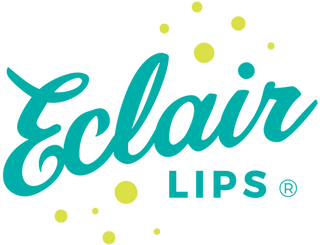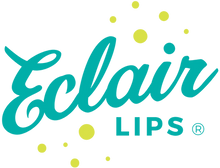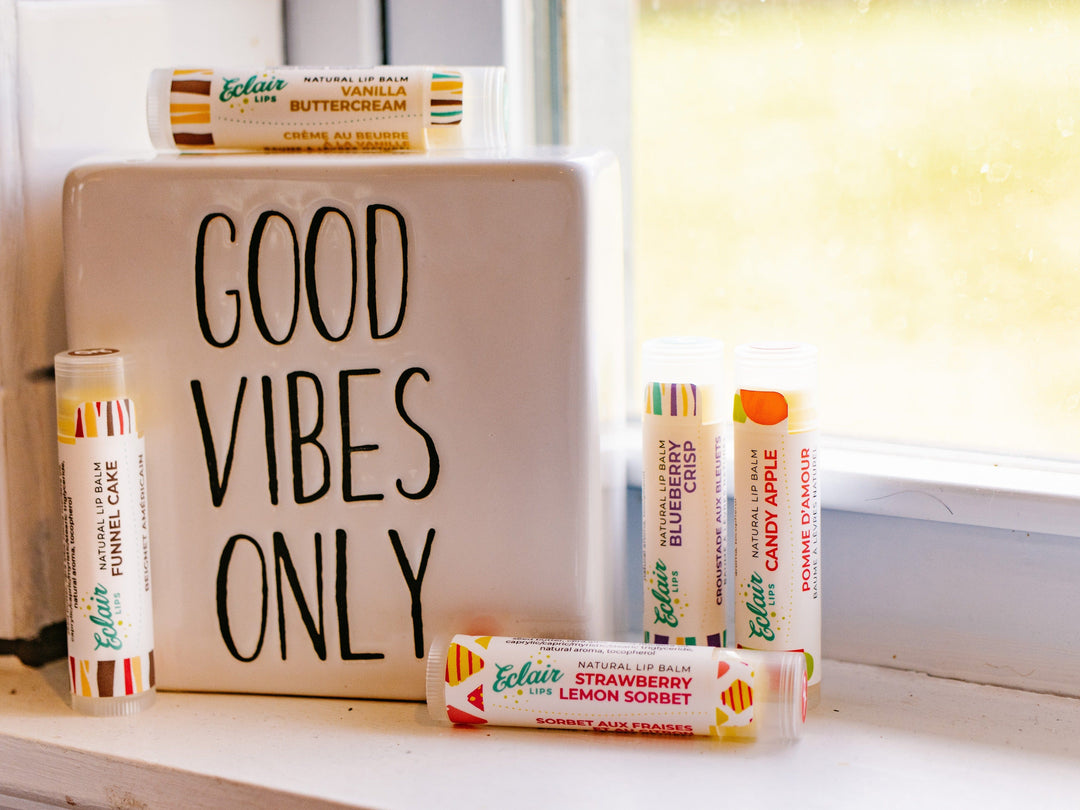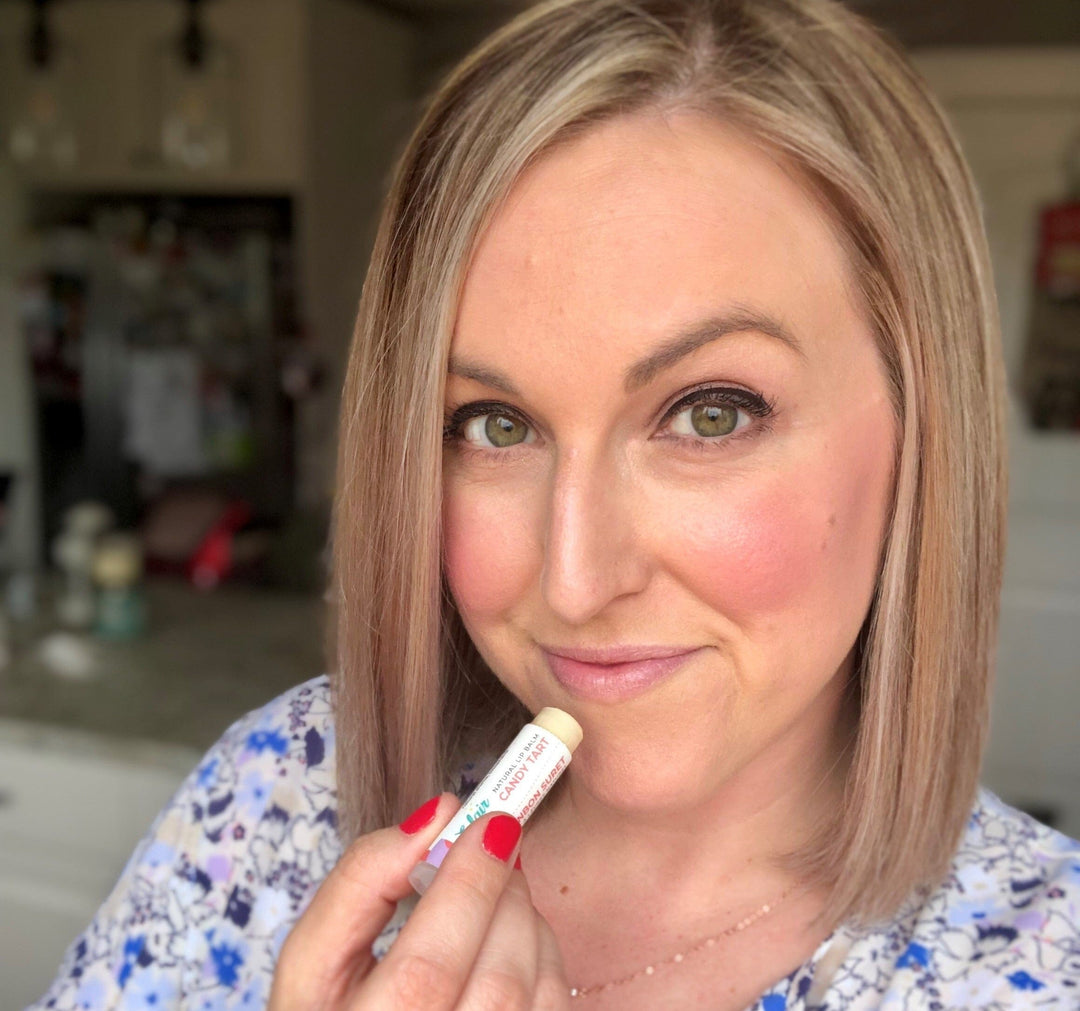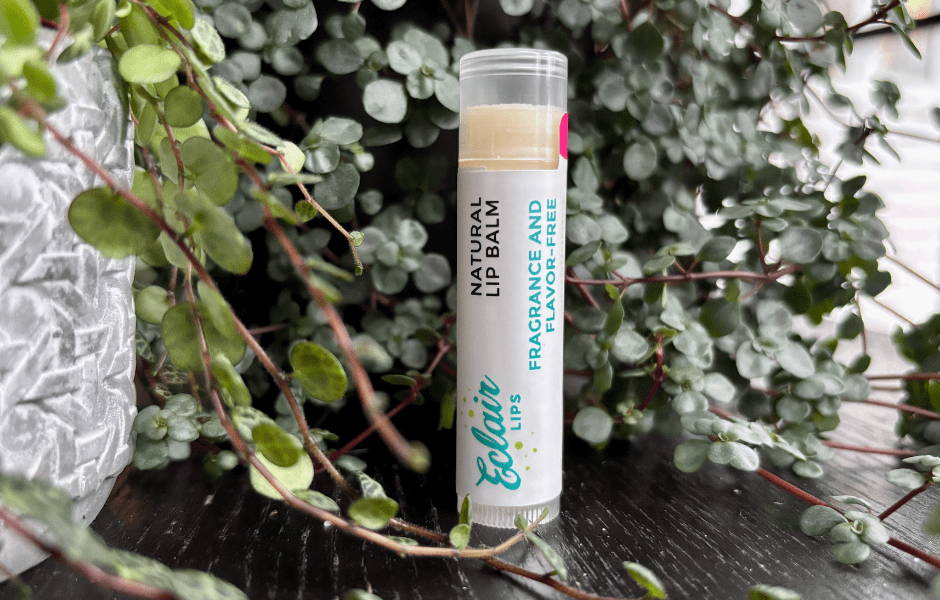Best Tasting Lip Balm: Understanding Scent, Sweetness, and What You'll Actually Experience
The Truth About Flavoured Lip Balm (and What Makes Them Actually Taste Good)
If you've ever been drawn to a lip balm because it smelled like vanilla buttercream or cherry pie, only to realize it didn't really taste like anything when you applied it, you're not alone. There's a common misunderstanding about what "flavoured" lip balm actually means, and it's time to clear that up so you can find a balm that delivers the experience you're looking for.
Here's what most people don't realize: unless a lip balm contains a sweetener, it will smell delicious but won't actually taste like much of anything. That vanilla balm? It smells like vanilla. That strawberry balm? Smells like strawberries.
But when you lick your lips (and we all do it, even though we shouldn't), most balms taste pretty neutral or slightly waxy, not like the flavour on the label.
In this guide, we'll walk through why this happens, what actually creates taste in lip balm, and how to find balms that deliver either the scent experience you want or the actual taste if that's what you're after.

Quick Takeaway
- Most "flavoured" lip balms provide scent, not actual taste, unless they contain sweeteners
- Sweeteners (sugar, stevia, etc.) are what make lip balms actually taste like their flavour, but they encourage licking which dries lips
- Food-grade flavour oils are safe for lips and provide delicious aromas even without creating taste
- Exfoliating lip balms often taste sweet because the exfoliant itself is sugar
- The best lip balm for you depends on whether you want scent, taste, or both
Contents
The Confusing World of "Flavoured" vs "Scented" Lip Balm
Let's start with the terminology, because it's genuinely confusing. In the cosmetics world, "flavour oils" and "fragrance oils" are different things, but not in the way you'd expect.
Fragrance oils are designed purely for scent and aren't safe to ingest. Flavour oils, on the other hand, are formulated to be safe if ingested (which is important for lip products), and they're technically classified as "flavours" even though they primarily provide aroma, not taste.
This is why you'll see lip balms labelled as "flavoured" even when they don't really taste like anything. The "flavour" refers to food-safe scenting ingredients, not actual taste. Canadian and US regulations require these to be listed as "aroma" on labels, which adds another layer of confusion.
So when you buy a coconut cream pie lip balm, you're getting a balm that smells like coconut cream pie using food-safe ingredients. But unless that balm also contains a sweetener, it won't taste like coconut cream pie when it touches your tongue.

What Actually Creates Taste in Lip Balm
Here's where the science gets interesting. Taste and smell are deeply connected, but they're not the same thing. When you apply a vanilla-scented lip balm, your nose picks up that vanilla aroma beautifully. But your taste buds? They're mostly detecting the base ingredients of the balm itself (oils, waxes, butters), which don't taste like much.
To create actual taste in lip balm, you need sweetness. Sweeteners like stevia, sugar, honey, or specialized lip balm sweeteners do two things: they add sweetness, and they help "trick" your brain into tasting the flavour you're smelling.
When you smell coconut and taste something sweet at the same time, your brain connects those sensations and perceives the taste of coconut, even though the coconut flavour oil itself doesn't have a strong taste on its own.
This is why exfoliating lip balms often taste noticeably sweet and delicious. The exfoliant in many of these products is sugar, which creates that genuine taste experience people love. Regular lip balms without sweeteners, on the other hand, smell wonderful but don't offer much actual taste.
Why Most Brands Skip the Sweetener
If sweeteners make lip balms taste good, why don't all brands use them? The answer is practical: sweetness encourages licking. When your lip balm tastes sweet and delicious, you're much more likely to lick your lips throughout the day.
And licking your lips is one of the worst things you can do for lip dryness because saliva evaporates quickly and takes moisture with it.
Many lip balm brands (including thoughtful ones) deliberately avoid adding sweeteners to their regular balms for this reason. The balm can only moisturize your lips if it stays on your lips.
If you're constantly licking it off because it tastes good, you end up with drier lips than when you started, which defeats the entire purpose.
Understanding Food-Safe Flavour Oils
Even though flavour oils don't create strong taste on their own, they're still the right choice for lip balm over regular fragrance oils. Here's why.
Food-Safe vs Cosmetic-Grade
Flavour oils are made with GRAS (Generally Recognized as Safe) ingredients that are approved for potential ingestion. Because lip balm sits on your mouth all day and you inevitably ingest small amounts of it, using food-safe ingredients matters. Regular fragrance oils, on the other hand, are designed purely for scent and aren't formulated with ingestion in mind.
The safety difference isn't about whether you'll get sick from accidentally swallowing a bit of balm (you won't, with either type). It's about cumulative exposure.
You're applying lip balm multiple times a day, every day. Food-safe flavour oils are tested and regulated for this kind of repeated, low-level consumption. Regular fragrances aren't.
How Much Flavour Oil Is Used
Flavour oils are typically used at 0.4-4% of the total lip balm formula, depending on the strength of the specific oil. That's a tiny amount, but it's enough to create a beautiful scent. If you use too much, the balm can actually become uncomfortable, sometimes creating a tingling or burning sensation on your lips.
The base formula (cocoa butter, beeswax, coconut oil, and other moisturizing ingredients) makes up the vast majority of the balm. The flavour oil is just the finishing touch that makes each application a pleasant sensory experience.

What to Expect: Scent-Forward vs Taste-Forward Balms
Now that you understand the difference, here's what to expect from different types of balms.
Regular Lip Balms Without Sweetener
These balms smell amazing. Whether it's dessert-inspired flavours like vanilla buttercream or banana cream pie, or fruit flavours like cherry or lemon, the scent will deliver.
You'll smell it when you apply the balm, and if you bring your lips close to your nose, that delicious aroma is right there.
But when you lick your lips (and again, try not to), you'll mostly taste... lip balm. The base ingredients. Maybe a very subtle hint of the flavour oil, but nothing like the powerful scent would suggest.
And that's actually fine, because these balms are doing their job: moisturizing your lips without encouraging you to lick them off.
Exfoliating Lip Balms
These are the exception. Because exfoliating balms use sugar as the exfoliant, they taste genuinely sweet and delicious. The sugar provides both the physical exfoliation and the sweetness that creates actual taste.
When you use an exfoliating balm, you get both the scent and the taste experience.
The trade-off is that you wouldn't want to use these multiple times throughout the day like a regular balm. They're treatments meant for occasional use (a few times a week), so the licking temptation isn't as much of a concern.
Balms With Added Sweeteners
Some brands do add sweeteners like stevia, honey, or specialized lip balm sweeteners to their regular balms. These will taste sweet and can help you perceive more of the flavour. Sweetness enhances the flavour perception, making a vanilla balm "taste" more like vanilla even though it's really just the combination of vanilla scent plus sweet taste.
If you love the idea of lip balm that tastes as good as it smells, look for balms that specifically mention sweeteners in their ingredients. Just be aware that you might find yourself reapplying more often (and licking more) than with unsweetened versions.
| Balm Type | Scent | Taste | Licking Risk | Best For |
|---|---|---|---|---|
| Regular balm without sweetener | Strong and delicious | Minimal, mostly base oils/waxes | Low | Daily moisture, consistent use |
| Regular balm with sweetener | Strong and delicious | Sweet, enhanced flavour perception | Higher | Those who want taste and don't mind frequent reapplication |
| Exfoliating balm with sugar | Strong and delicious | Sweet and truly tasty | Moderate | Occasional treatment, exfoliation |
| Fragrance-free balm | None or very subtle natural scent | Minimal base ingredients only | Very low | Sensitive lips, strong scent aversion |
Choosing Scents That Work for You
Since most lip balms are primarily scent-driven experiences, choosing the right scent becomes crucial. Here's how to think about what you want.
Dessert-Inspired Scents
If you love the idea of sweet, indulgent aromas, dessert flavours are wonderful. Vanilla, cinnamon, chocolate, caramel, these scents feel comforting and treat-like. They make lip balm application feel like a small moment of joy rather than just a maintenance task.
The nice thing about dessert scents in balm form is that you get all the pleasure of the aroma without any calories, sugar spikes, or guilt. It's pure sensory enjoyment.
Fruit Scents
Fruity balms bring brightness and freshness. Cherry, strawberry, lemon, these scents feel clean and uplifting. They're universally appealing and work well for all ages.
If you're buying for kids, fruit scents are usually a safe bet because they're familiar and fun.
Mint and Herbal Scents
Mint provides that fresh, clean feeling that many people associate with lip care. A light mint balm can feel invigorating without being medicinal.
Just make sure the mint comes from food-safe flavour oil rather than straight peppermint essential oil, which can be irritating on sensitive or chapped lips.
Subtle vs Bold
Think about scent intensity. Some people love a strong, bold aroma that they can smell clearly throughout the day. Others prefer something more subtle that provides just a hint of scent when they apply it.
Most balms fall somewhere in the middle, but if you're sensitive to strong scents, you might want to start with lighter options or even fragrance-free.

Safety Considerations and Allergens
Whether you're choosing scent-forward or taste-forward balms, safety matters.
Food-Safe Ingredients
Always look for balms that use food-grade flavour oils rather than regular cosmetic fragrances. You're going to ingest tiny amounts of whatever's in your lip balm, so it should be formulated with that in mind. Food-grade flavour oils meet regulatory standards for lip products and potential consumption.
Allergen Awareness
If you have food allergies, be cautious with flavours that might contain or mimic those allergens. A coconut-scented balm might not be right if you react to coconut. A nut-flavoured balm could be problematic for someone with nut allergies.
The flavour oils are usually synthetic, which can sometimes be safer than natural extracts for people with allergies, but it depends on the specific formulation.
Essential Oils vs Flavour Oils
Some balms use essential oils for scent instead of flavour oils. Essential oils are natural, but they can also be irritating, especially on dry or cracked lips. Peppermint oil, citrus oils, and cinnamon oil are common culprits.
Certain essential oil compounds like limonene can increase sun sensitivity, and linalool can irritate sensitive skin. If your lips are sensitive, food-grade flavour oils are generally a gentler choice than essential oils.

Real-World Scenarios: What Works for Different People
Let's talk about how different people might approach choosing between scent and taste.
For Kids
Kids love things that taste good, but encouraging them to lick their lips isn't ideal for keeping them moisturized. A middle-ground approach works well: choose balms with fun, appealing scents that smell delicious without added sweeteners. The scent makes it fun and interesting, but it won't encourage constant licking.
If a child really wants something they can taste, exfoliating balms used occasionally (maybe once or twice a week) can provide that experience without turning regular lip care into a licking fest.
For Work and Professional Settings
In an office or professional environment, strong scents can be distracting to others. A subtle vanilla, light mint, or fragrance-free option lets you care for your lips without broadcasting it to everyone around you.
For Scent Lovers
If you genuinely love scented products and find joy in those small sensory moments throughout the day, embrace scent-forward balms without worrying too much about taste.
The scent is what you'll notice most anyway (since you're not constantly licking your lips, right?), so choose flavours that make you happy every time you apply.
For People Who Want Actual Taste
If you really want that taste experience, you have a couple of options. Look for balms that specifically include sweeteners in their ingredients, or focus on exfoliating balms that deliver genuine sweetness.
Just be mindful about licking, and maybe keep a regular unsweetened balm on hand for times when your lips feel extra dry and need moisture to stay put.
Common Questions About Scent and Taste in Lip Balm
Why doesn't my flavoured lip balm taste like anything?
Most "flavoured" lip balms use food-safe flavour oils that primarily provide scent, not taste. Unless the balm contains a sweetener (like stevia, sugar, or honey), it won't taste like much when it touches your tongue. The flavour oils create a delicious aroma that you'll smell clearly, but taste requires sweetness to come through.
Are sweetened lip balms safe?
Yes, sweetened lip balms are safe. The concern isn't about toxicity, it's about behaviour. When a balm tastes sweet and delicious, you're more likely to lick your lips, and licking removes the protective layer of balm while exposing your lips to saliva that evaporates and causes dryness. If you use sweetened balms, just try to resist the urge to lick.
Can I make my unsweetened balm taste better?
Not really, unless you're making your own balm and can add sweetener during the formulation process. You can't just add liquid stevia or honey to an already-made balm stick, it wouldn't mix properly. If you want taste in addition to scent, look for balms that already include sweeteners or choose exfoliating versions.
Why do exfoliating lip balms taste so good?
Exfoliating lip balms often use sugar as the exfoliating agent, and that sugar creates genuine sweetness and taste. The combination of sweet-tasting sugar plus scented flavour oils gives you both taste and smell, which is why exfoliating balms deliver that full sensory experience that regular balms don't.
Is it bad that I lick my lip balm?
It's not dangerous, but it's counterproductive. Licking removes the protective balm layer and exposes your lips to saliva, which evaporates and dries them out further. If you find yourself constantly licking your balm, try switching to an unsweetened version that's scent-forward but doesn't tempt you to lick.
Are food-grade flavour oils actually edible?
Food-grade flavour oils are made with GRAS ingredients that are approved for use in products that may be consumed, but that doesn't mean you should eat them straight from the bottle.
They're formulated to be safe in the tiny amounts used in lip balm that you might accidentally ingest. Lip balm isn't food, even when it's made with food-safe ingredients.
Can I use essential oils instead of flavour oils for scent?
You can, but essential oils come with more risks. Some are irritating on lips, some increase sun sensitivity, and some aren't recommended for children or pregnant women. Food-grade flavour oils are generally safer and gentler for daily lip use, especially if you have sensitive or chapped lips.
Do natural flavours taste better than artificial ones?
Neither natural nor artificial flavour oils create strong taste on their own without sweeteners. The distinction between natural and artificial matters more for allergen concerns and personal values than for taste. Both can provide wonderful scents that are safe for lip use.

Finding What Works for You
The best lip balm for you depends on what kind of experience you're looking for. If you want delicious scents that make lip care feel special without encouraging licking, choose well-formulated balms with food-safe flavour oils and no added sweeteners.
If you want actual taste along with scent, look for balms with sweeteners or choose exfoliating versions for occasional use. And if scents aren't your thing at all, fragrance-free options provide straightforward moisture without any sensory extras.
The most important thing is finding a balm that you'll actually use consistently, because that's what keeps your lips healthy and comfortable. Whether that comes from loving the scent, enjoying the taste, or simply appreciating effective moisture, the right balm is the one that makes you happy every time you use it.
More Lip Balm Guides
- How to choose the best natural lip balm
- Best unscented lip balm for sensitive lips
- Understanding lip balm ingredients
- Finding the most hydrating lip balm
- Essential oils for lip balm safety
- Best lip balm options for men
- Choosing lip balm at the drugstore
- Dermatologist-recommended lip balms
- Protecting lips in winter weather
- Complete guide to finding your best lip balm
Explore Our Online Lip Balm Shop
At Eclair Lips, we believe the best lip balm is the one you love to use every day. Every balm is handmade in small batches with natural ingredients, playful dessert-inspired flavours, and a texture we obsessed over until it felt just right. We ship anywhere in Canada and the US, so whether you are in Toronto, Halifax, Las Vegas, or Chicago, you can stock up on your favourite lip balm Canada style, right from your couch.
In our shop, you will find tinted lip balm for a hint of colour, fragrance free balm if your lips are on the sensitive side, gentle lip scrubs to keep everything smooth, and even lip balm for kids when you want something safe and fun to share. Looking for variety? Try a lip balm set to explore new flavoured lip balm favourites or to give as a gift.
Our brand is built on honesty, humour, and heart, and that means no scare tactics, no overblown claims, just lip care that feels good and makes you smile.
Take a peek at our collections here: https://eclairlips.com.
Disclaimer: The information in this post is meant to be helpful, and while we love dorking out about lip balm, it isn't medical advice. Everyone's needs are different, so if you have concerns about allergies, sensitivities, pregnancy, or a medical condition, please check with a healthcare professional before trying new products.
